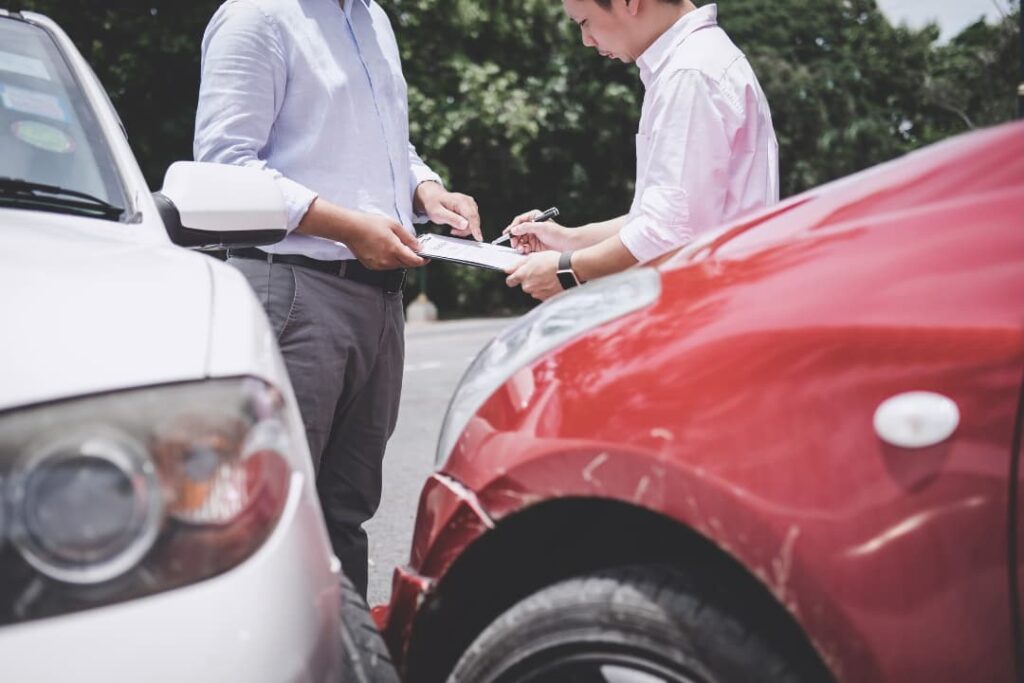Initial Reaction: Ensuring Safety and Health
The moments following a car accident can be disorienting and immeasurably stressful. The adrenaline rush can impair judgment during an accident, so it’s critical to prioritize safety. To prevent additional danger and harm, ensure everyone involved is relocated to a secure area, ideally off the road. If your vehicle is operational, move it to the shoulder. Activate your vehicle’s hazard lights to alert oncoming traffic to the situation.
In scenarios where injuries have occurred, it is vital to call emergency services immediately for medical assistance. Time is of the essence in emergencies, and professional medical personnel are best equipped to handle injuries. Even if injuries seem minor at first glance, some conditions, such as whiplash or concussions, may not become apparent until later. Professional documentation of injuries can also benefit future legal or insurance-related proceedings. After ensuring safety, you can get help from car accident experts who can guide you through the complex legal landscape that follows such incidents.
Documenting the Scene: What to Capture
Accurately documenting the accident scene is a critical step in the aftermath of a crash. This process involves taking detailed notes and photographs to provide invaluable evidence for your insurance company and any potential legal needs. Use your smartphone or any available camera to capture clear images of all vehicles involved in the accident. Pay special attention to any visible damage to the cars and road conditions, such as skid marks, traffic signs, and weather, as these can contribute to a better understanding of how the accident occurred.
The goal is to piece together a comprehensive record of the scene that vividly captures the incident. This includes taking wide-angle shots encompassing the overall situation and detailed photos of specific points of interest. Detailed documentation not only serves as an accurate record of events but also aids in ensuring that the insurance claims process goes smoothly. Additionally, it can act as a protective measure against any disputes about the event.
Exchanging Information: What You Need to Know
Once safety is secured and the scene documented, it’s time to exchange information with the other drivers or drivers involved. This exchange is crucial and involves collecting names, contact numbers, insurance information, and vehicle registration details. Staying calm and composed during this exchange is essential, as stress can exacerbate an already tense situation.
It’s imperative to maintain objectivity and civility. Avoid discussing liability or pointing fingers since admissions of fault can complicate matters later, especially during insurance evaluations or legal processes. Instead, focus on gathering and providing accurate information. This step ensures all parties have the necessary details for submitting claims to their respective insurance companies.
Speaking to Witnesses: Gathering Additional Insights
Witnesses to the accident can offer valuable, unbiased perspectives that may be crucial if accounts conflict later on. If there are bystanders, approach them politely and ask if they would be willing to provide their observations and contact information. Witness statements can give a clearer picture of what occurred, reinforcing your account of the accident.
Gathering witness statements strengthens your record of the event, offering multi-perspective documentation that could support you during the claims process or in court. Those closely involved in the disaster can miss essential details that witnesses might notice.
Informing Authorities: Why It’s Essential
Contacting the police should not be skipped, regardless of the accident’s severity. An official document that offers an unbiased description of the incident and a police report can be crucial for insurance and legal claims. The presence of law enforcement can also diffuse tensions and ensure that the necessary procedures are followed correctly.
When providing your account to the authorities, keep your statements factual and avoid speculating about uncertainties. An accurate and honest account ensures that the police report reflects the event as truthfully as possible. This report can serve as a cornerstone document when dealing with insurance companies and legal entities.
Contacting Insurance: The Dos and Don’ts
With everything else settled, your next step should be liaising with your insurance company. Report the accident to your insurer promptly, providing a factual account. While sharing your frustrations or concerns may be tempting, stick to the facts and avoid admitting fault or liability.
Understanding your insurance policy is crucial to effectively navigating claims for property damage, medical expenses, and other covered losses. Knowing what your policy entails helps set realistic expectations about the coverage and support you can anticipate from your insurer, ensuring you handle the process smoothly.
Seeking Legal Assistance: When and Why
Legal counsel is particularly beneficial in cases involving personal injuries or disputed fault. An experienced attorney can offer guidance on your rights, negotiate with insurance companies on your behalf, and advocate for fair compensation for damages and losses sustained in the accident.
If you feel overwhelmed or unsure about navigating the complexities of post-accident procedures, seeking legal assistance ensures that your interests are represented and that you comply with applicable laws and regulations. Knowing that a professional manages your case, legal guidance can also offer peace of mind.
Common Mistakes to Avoid Post-Accident
The stress of an accident can lead to common but avoidable mistakes. These mistakes include failing to document the scene properly, making unsolicited admissions of fault, or neglecting to inform authorities. Such missteps can complicate insurance claims and potentially exacerbate legal problems.
By preparing yourself with a clear understanding of the necessary steps and potential pitfalls, you can minimize stress and ensure a smoother resolution. Approach each step methodically, prioritizing clarity and factual accuracy in all communications and documentation.







